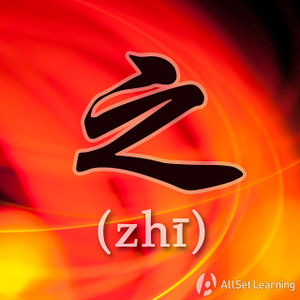Difference between revisions of "Expressing possession with "zhi""
m (Text replace - "{{Grammar Box}} " to "{{Grammar Box}} ") |
m (Text replace - "(\r?\n){2}" to "\r\n") |
||
| Line 1: | Line 1: | ||
{{Grammar Box}} | {{Grammar Box}} | ||
| − | {{Stub}} | + | {{Stub}}\r\n之 is one of the characters from classical Chinese that has come into common usage. It a formal written way to express possession\r\n== Structure ==\r\n之 functions similarly to 的 in that it indicates possession. Remember that 之 is used this way formally, and most of the time it is used for titles of works, poems, formal documents etc.\r\n<div class="jiegou"> |
| − | |||
| − | |||
| − | |||
| − | == Structure == | ||
| − | |||
| − | |||
| − | |||
| − | <div class="jiegou"> | ||
Noun + 之 + Noun | Noun + 之 + Noun | ||
| − | </div> | + | </div>\r\n=== Examples ===\r\n<div class="liju"> |
| − | |||
| − | === Examples === | ||
| − | |||
| − | <div class="liju"> | ||
* 害 人 <em>之</em> 心 不 可 有,防 人 <em>之</em> 心 不 可 无。 | * 害 人 <em>之</em> 心 不 可 有,防 人 <em>之</em> 心 不 可 无。 | ||
* 这些 解决 问题 的 方式 仍然 有 不足 <em>之</em> 处。 | * 这些 解决 问题 的 方式 仍然 有 不足 <em>之</em> 处。 | ||
| Line 20: | Line 8: | ||
</div> | </div> | ||
| − | 之 cannot simply take the place of any 的. Pay attention to the kinds of words it can be paired with. | + | 之 cannot simply take the place of any 的. Pay attention to the kinds of words it can be paired with. \r\n==Sources and Further Reading== |
| − | |||
| − | ==Sources and Further Reading== | ||
===Books=== | ===Books=== | ||
| − | *[[卓越汉语-公司实战篇]] (p. 199) [http://www.amazon.cn/%E5%8D%93%E8%B6%8A%E6%B1%89%E8%AF%AD-%E5%85%AC%E5%8F%B8%E5%AE%9E%E6%88%98%E7%AF%87-%E8%83%A1%E7%81%B5%E5%9D%87/dp/B003QZWQ6M/ref=sr_1_1?ie=UTF8&qid=1347863170&sr=8-1 →buy] | + | *[[卓越汉语-公司实战篇]] (p. 199) [http://www.amazon.cn/%E5%8D%93%E8%B6%8A%E6%B1%89%E8%AF%AD-%E5%85%AC%E5%8F%B8%E5%AE%9E%E6%88%98%E7%AF%87-%E8%83%A1%E7%81%B5%E5%9D%87/dp/B003QZWQ6M/ref=sr_1_1?ie=UTF8&qid=1347863170&sr=8-1 →buy]\r\n[[Category: C1 grammar points]] |
| − | |||
| − | [[Category: C1 grammar points]] | ||
[[Category: Particles]] | [[Category: Particles]] | ||
{{Basic Grammar|之|C1|Noun + 之 + Noun|这些 解决 问题 的 方式 仍然 有 不足 <em>之</em> 处。|grammar point|ASGBAIMA}} | {{Basic Grammar|之|C1|Noun + 之 + Noun|这些 解决 问题 的 方式 仍然 有 不足 <em>之</em> 处。|grammar point|ASGBAIMA}} | ||
{{Used for|Expressing possession}} | {{Used for|Expressing possession}} | ||
{{POS|Particles}} | {{POS|Particles}} | ||
Revision as of 06:08, 26 November 2013
| This article is a stub. Editors can help the Chinese Grammar Wiki by expanding it. |
\r\n之 is one of the characters from classical Chinese that has come into common usage. It a formal written way to express possession\r\n== Structure ==\r\n之 functions similarly to 的 in that it indicates possession. Remember that 之 is used this way formally, and most of the time it is used for titles of works, poems, formal documents etc.\r\n
Noun + 之 + Noun
\r\n=== Examples ===\r\n
- 害 人 之 心 不 可 有,防 人 之 心 不 可 无。
- 这些 解决 问题 的 方式 仍然 有 不足 之 处。
- 粗心 之 害 大于 无知。
之 cannot simply take the place of any 的. Pay attention to the kinds of words it can be paired with. \r\n==Sources and Further Reading==
Books
- 卓越汉语-公司实战篇 (p. 199) →buy\r\n



